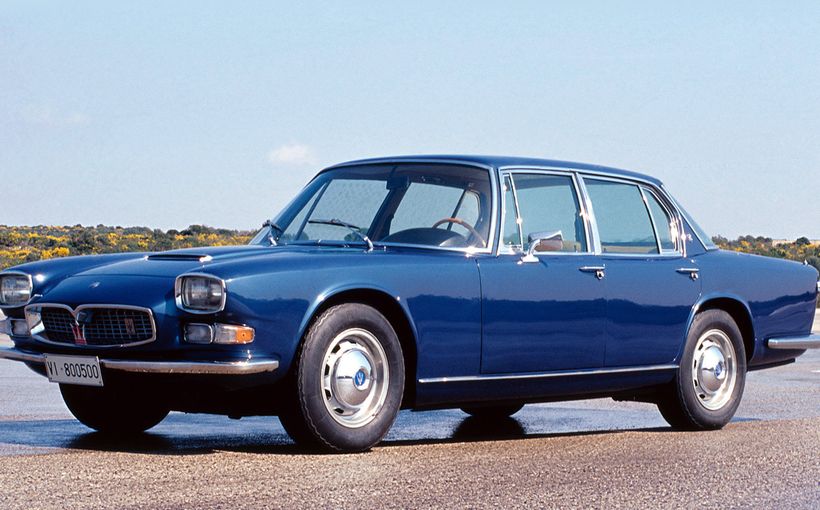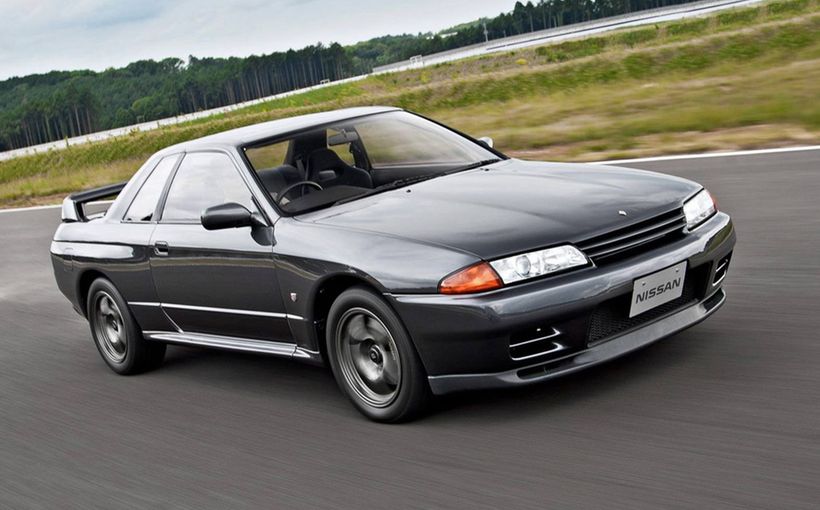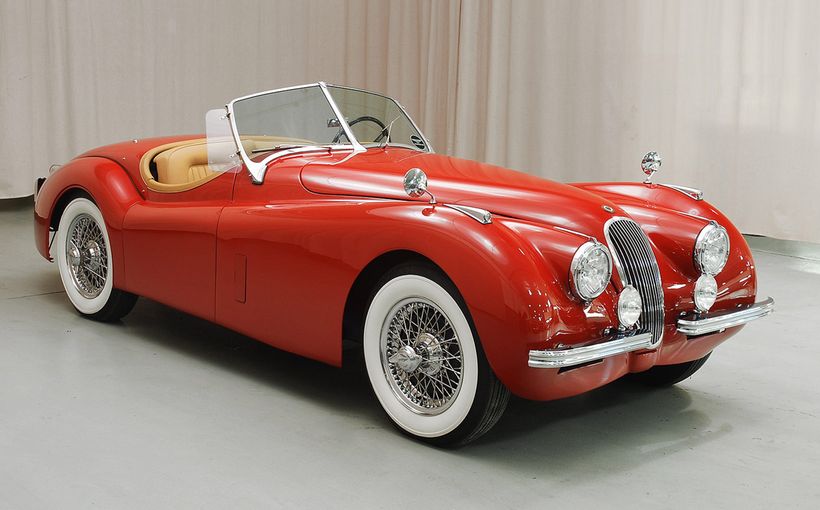Leyland Marina: no safe harbour in Australia

17 January 1968 was a crucial date in the demise of the British motor industry through the 1970s and 1980s. On this day the Leyland Motor Corporation took over British Motor Holdings, comprising BMC, Pressed Steel and Jaguar, to form British Leyland. The new chairman was Leyland man (and, indeed, Triumph stalwart) Donald Stokes (later Sir Donald, later again Lord Stokes).

Stokes was heard to complain that he found the BMC cupboard was bare. But that was hardly true because it contained not only the ADO10 Mini, the ADO16 Morris 1100 and the ADO17 Austin 1800 but also the ancient Farina 1.6-litre sedans and the even more ancient Morris Minor 1000. What he probably should have said the future product cupboard was almost bare, the sole new car in planning being the Austin Maxi.

Through the 1950s and into the 1960s BMC and Ford had competed for leadership of the British market. But towards the end of that second decade, fleet sales accounted for two out of every three sales. No question, fleet buyers preferred the conservative rear-wheel-drive Cortina to BMC’s top seller, the Morris 1100. Not only that, but the market was steadily growing more affluent and the BMC car was seen not only as too mechanically frail but too physically small (despite the generosity of its interior space).

Stokes, whose background was marketing, did some swift thinking. At the debut of the Austin Maxi in 1969, it was announced that Austin would produce the technically advanced models while Morris would handle the mainstream. As for mainstream, in early 1971 it made its debut at Cannes as the Morris Marina. Perhaps the choice of this location, home to the world’s most glamorous international film festival, was intended to distract guests from the sheer ordinariness of the car, but many of the assembled media wrote reasonably positive road reports.
The author of British Leyland: the truth about the cars, Jeff Daniels, was one of the guests. He was far from enthusiastic:
Some of those who attended must have been so lulled by the pleasures of the Hotel Carlton that they decided they quite liked the Marina. Others did not. I shared a 1.8-litre car with Doug Nye, and scared him by ending up on the wrong side of the road when emerging from several tight corners. He then returned the compliment. It was not us, it was the car. Our drive came to an end when we holed the sump…I returned to Britain with a sense of disquiet because I had to write the car’s technical description and first driving impressions for Autocar.
Nevertheless, in the British motoring journalist style of the time, Daniels managed to tone down his criticisms in print at the time.

It seems to me that the Marina, even more than the Maxi or the Austin Allegro which replaced the 1100, was the car that marked the beginning of the real decline of the British industry – a decline which as to some extent been reversed in recent years. It never sold in the volumes intended and was as conservative in its design and engineering as the Mini (1959), Morris 1100 (1962) and Austin 1800 (1965) had been radical. And it turned out to be the last ever Morris – the Ital being a revised Marina.
The Marina was originally intended as a stopgap car to remain in production only half a decade or so. It was to replace both the Farina Oxford and the Minor 1000. But Stokes and his team could not have known that their first new Morris would fail to match its Cortina rival. And they certainly couldn’t have known that it would be their one and only Morris!
Ford had moved the goal posts. By the time the Marina was ready – and there had been the forlorn hope of revealing it at the 1970 London Motor Show – Ford had introduced its Mark III (TC) Cortina, a significantly bigger car than its two almost identically-sized predecessors.

Had the Marina been a brilliant car, this size deficiency might not have mattered. But, sadly, the Marina was more than usually compromised. Almost unbelievably, it used the front suspension out of the Morris Minor, complete with lever arm dampers. It was probably no coincidence that British Leyland had large stocks of these components left over. On the lower-powered 1.3-litre variants, the Minor front end was not a major problem. But the 1.8-litre TC (for twin carburettor) Marina could reach 100 miles per hour.
Strong complaints behind closed doors by members of the British motoring press to BL’s chief engineer Harry Webster resulted in major modifications to the suspension. Initially, only the 1.8-litre cars got the change but it later filtered through to all Marinas.
Even this attention did not turn the Marina into a handler. At very best, it was barely average with pronounced initial understeer, easily converted to roll oversteer.
Where the Morris 1100 had been designed by Pininfarina, the Marina was an in-house job by Harris Mann, who would later be responsible for the love-it-or-hate-it Triumph TR7.
In Australia, the Marina replaced the Morris 1500 and Nomad and that car’s 1500cc single overhead camshaft engine was carried over, along with a 1750 SOHC in single- and twin-carb versions. The Morris 1500 (E-Series) engine was designed for minimum block length for transverse mounting and thus had minimal spacing between cylinders. For an increase in capacity, it had to be stroked. The bore of the 1750 engine remained at 76.2mm but the stroke went up from 81.3mm to 95.8mm.

The plan had been to sell the car locally as the Cavalier and Carina, depending on the variant. The badges had even been produced when Lord Stokes visited Australia and decreed that since it was called the Morris Marina everywhere else, it should carry that name here, too. The car itself was released here in March 1972. (Interestingly, the rest of its name would in fact change – from ‘Morris’ to ‘Leyland’ when the P76 was launched the following year.)
There were sedan and coupe variants. Three versions were offered – Deluxe, Super Deluxe and TC (twin carburettors). This latter (coupe only) was the pick of the four-cylinder Marinas and came complete with reclining (rather than fixed-back) bucket seats, three-spoke steering wheel, opening rear quarter vents, centre console and tachometer (in lieu of a clock). Peak brake horsepower was 62 for the 1500, 78 for the 1750 and 90 for the TC. The TC was a performance coupe bargain at $2775 in mid-1972, compared with, say, the Mazda 1300 (78 bhp) at $2646 and the Datsun 1200 (69 bhp) at $2595.

While in theory it might have seemed logical to make Austin the high-tech brand and Morris the mainstream-cum-fleet, there were serious practical downsides. The Morris 1500 was a real driver’s car, the overhead cam engine having finally endowed the compact ADO16 with sufficient performance. What a comedown the Marina represented. The April 1972 edition of Wheels previewed the new car and printed a comparison of specifications. The Marina was a foot and a half longer and four and a half inches wider. It weighed 18.3 hundredweight, a neat hundredweight more than the 1500. But it offered no more interior space and none of the treasured agility of its front-wheel-drive predecessor. How was this meant to represent progress?
(The British journalist Robert Coucher, founder of the brilliant Octane magazine, has suggested that the classic car movement favours 1960s models over their 1970s counterparts because many of the latter were dull. Compare the Marina with the Morris 1500 or Austin 1800, the Fiat 132 with the 125 or the Renault 16TS with the 12GL and you might agree with him.)

In this preview, Wheels gave the Marina a decent kind of boost:
In England, the Marina has met with resounding success and could do as well in Australia. It seems to be well suited to the market’s needs and might initiate a turnaround in the fortunes of British Leyland.
Leyland Australia’s engineers made significant changes to the Marina, but dynamics were still not its strong point. In his preview drive (Wheels, May 1972), Peter Robinson said the Australian car was much better than its English counterpart (which, by this time he had driven and disliked). But it remained the case that the more powerful the variant, the more wayward the handling.

This point really came home with a vengeance when Leyland Australia plumbed the P76 six-cylinder engine into the Marina to challenge the interesting new market sector created by the Torana and Cortina sixes. First Peter Robinson and then Mike McCarthy were highly critical. McCarthy’s introductory paragraph in his March 1974 road test is succinct:
The Marina six has tremendous acceleration and flexibility, is outstandingly economical for its size and performance, and possesses some unsettling handling characteristics.
Optional radials made a big difference, said McCarthy, while still damning the car with faint praise:
The radials certainly produce a marked improvement over the cross-ply tyres on the Marina 262 for roadholding and cornering in the dry. They made the car much more sure-footed (within the limits imposed by the suspension and handling)…
The Marina six delivered superior performance to its Holden and Ford rivals, due to a better power to weight ratio. McCarthy tested a four-door Super sedan which weighed just 951kg and made 90kW. It reached 60 miles per hour (97km/h) in 9.5 seconds, which was a blistering time for 1974 on its way to an even 18 seconds standing quarter-mile. The top speed was 103 miles per hour.

While the local engineers had done their best to improve the Marina, their really superb effort had gone into the essential design of the P76, a potentially brilliant car let down by poor manufacturing standards. Indeed, there is a case to be made that the P76 Targa Florio was the best entirely new car ever created within the British Leyland empire.
The Marina sold steadily in Australia, but was never a huge success. Arguably, the four-cylinder TC variant was the best choice. But Leyland’s best efforts to improve quality fell well short of what was being offered by the Japanese manufacturers. Indeed, there was enough trouble equalling the levels achieved by GM-H, Ford and Chrysler.
In summary, Leyland Australia’s engineers worked hard to turn a basically lacklustre car into a model that would perform acceptably in Australia’s demanding conditions. But as for the Marina’s design, it seems that Leyland went almost to the opposite extreme of the old BMC. Issigonis’s Mini, 1100 and 1800 were all very advanced front-wheel-drive cars that handled superbly but proved expensive to maintain. The Marina was utterly conventional. The Issigonis cars – especially the Austin 1800 – were not conspicuously stylish but they were emphatically different. By contrast, the Marina could almost have been a product of the Rootes Group.










